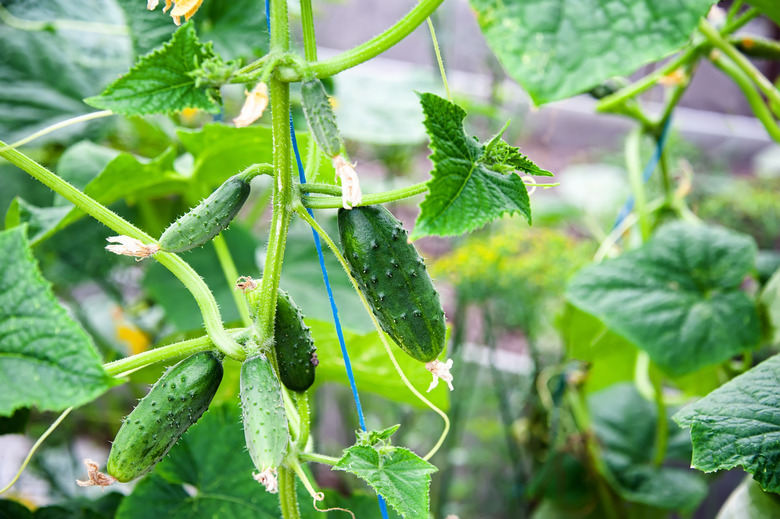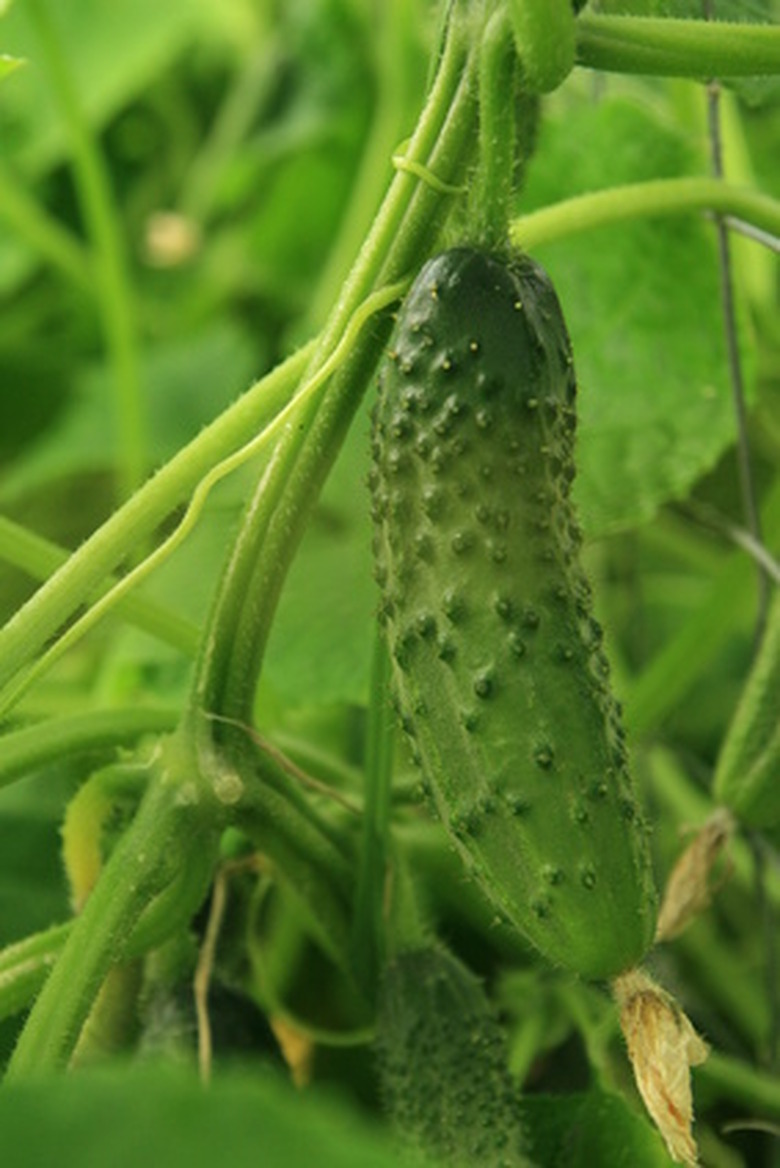Life Cycle Of A Cucumber Plant
The cucumber (Cucumis spp.) is an easy-to-grow and much-loved summer garden staple. As an annual, the life cycle of cucumber plants is completed in one year. It prefers warm temperatures, needs plenty of room to grow and can be grown in small garden spaces when trellised. Cucumbers are used fresh in salads, eaten plain and often pickled.
With so many species and cultivars, it may be surprising to learn that the life cycle of all cucumbers is remarkably similar.
5 Stages of a Cucumber Plant
- Seeds
- Seedlings
- Plants
- Flowering/Fruiting
- Harvest
Is Cucumber a Fruit or Vegetable?
Botanically speaking, the cucumber is a fruit; to the consumer, it's referred to as a vegetable; and to growers, it's also considered a vegetable.
The University of Georgia Cooperative Extension explains these different perspectives.
- Botanically, the cucumber is a fruit because it contains the seeds of the plant.
- On the table, it's considered a vegetable, which typically complements a main dish, instead of a fruit, which is eaten as a snack or dessert.
- Growers cultivate the vast majority of vegetables as annual crops with the majority of fruits growing on shrubs or trees as perennials.
Knowing the correct botanical classification of this plant doesn't really matter at the grocery store or farmers' market, or even how you serve it or eat it, but its botanical classification as a fruit is an essential part of the life stages of a cucumber plant.
Cucumber Life Stage 1: Seeds
The life cycle of cucumber plants begins with seeds. Seeds can be removed from the cucumbers and saved for the next year as long as you're growing an heirloom cultivar. Cucumbers grown on hybrid plants produce seeds that don't come true to type or seeds that won't germinate at all.
Cucumber seeds generally are viable for five years or more, stored under optimal conditions. The University of Connecticut notes that this viability window may increase ten-fold if seeds are stored in moisture-proof containers in the refrigerator or freezer.
Seeds may be started indoors several weeks before the last spring frost and transplanted as seedlings, or directly sown into the garden after the last frost
Cucumber Life Stage 2: Seedlings
If seeds were started indoors, they can be transferred outside when they are 3 to 4 weeks old and after the last frost date has passed. Whether thinning outdoor-grown plants or transplanting indoor starts, the seedlings do best when spaced 12 inches apart with rows spaced approximately 5 feet apart for vining types and 3 feet apart for bush types.
As they grow, blossoms will begin to form. Cucumbers have both male and female blossoms on each plant. Female blossoms have what resembles a tiny cucumber just below the flower; these are what develop into cucumbers if flowers are successfully fertilized following pollination.
Cucumber Life Stage 3: Plants
Cucumber plants may be bush types or vining types. Vines will sprawl and roam as they grow, but cucumbers will lie on the ground and risk rotting if allowed to grow this way. As long as the ground does not puddle during rain or watering, this should not impede growth.
In damp, poorly draining areas or in small gardens, trellises can be added to support the vines and the weight of the cucumbers.
Cucumber Life Stage 4: Flowering/Fruiting
As the plants grow, blossoms will begin to form. Cucumbers have both male and female blossoms on each plant.
Female blossoms have what resembles a tiny cucumber just below the flower; this is what develops into fruit if flowers are successfully fertilized following pollination.
Cucumbers should be checked daily for harvest, as they grow quickly and can become too large and bitter — filled with seeds and not as tasty. If a cucumber over-ripens, however, it can still be seed harvested for planting next year.
How Long Do Cucumbers Take to Grow? Stage 5: Harvest
Cucumber growth time to harvest varies because of the different types of cucumbers.
- Pickling types begin to be ready for harvest about 48 days after planting.
- Slicing varieties take 60 to 70 days before harvesting can begin.
Both will continue to produce throughout the warm growing season.
Cucumbers grow rapidly and should be checked daily for harvest. Left too long, the cucumber can become too large and bitter, filled with seeds and not as tasty.
From Seed to Seed
Overripe cucumbers, while they don't taste very good, are perfect for seed harvesting. Because of their size, they have more seeds than smaller cucumbers. Left to nature, they would fall to the ground and decompose, letting their seeds become part of the landscape or be eaten by animals and have their seeds distributed to other areas when they pass through the animals' digestive systems.
For collection purposes, remove the seeds from heirloom cucumbers and allow them to air dry. Store the seeds in a cool, dry place and you will have seeds for next year's sowing.

